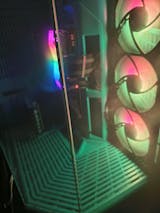A quality keyboard plays an essential role in any PC gaming setup, give you the competitive edge whether you are pounding opponents or commanding armies. As such, it is critically important that you tread carefully when choosing a keyboard to complement your custom build. Mechanical keyboards have been around since the 1980s, but today’s technology is quickly positioning these keyboards to be just as important as the graphics card you choose for your case or the processor you buy to ensure optimal performance. In this article, we explore the differences in mechanical keyboards to give you the head start you need to invest wisely and reap the benefits. What is a Mechanical Keyboard?Mechanical keyboards differ from the membrane keyboards used for day-to-day computing in that they are built with spring-activated key switches. Aside from the satisfying click of a key switch, mechanical keyboards are more ergonomic and easier to use. In the past, gamers only had two types of keyboards to choose from: Cherry MX or the membrane keyboards most people are familiar with. Today, there are a wide variety of mechanical keyboards to choose from. Every mechanical switch consists of a few essential parts:• Keycap: the plastic cover or top of a key that features a printed letter or function• Metal contact leaves: the conductive arrangement that registers keystrokes• Slider: the component that interrupts the connection between metal contact leaves• Spring: the spring that returns the switch to its resting position after release• Stem: the variably shaped component to which the keycap is mounted• Switch housing: the case that holds all the parts of a key switch togetherDifferences in Mechanical KeyboardsWhen it comes to mechanical keyboards, there are three categories to choose from. The keystroke on a linear switch is typically consistent and smooth. The keystroke on a tactile switch features a bump halfway through, usually around the actuation point. The keystroke on a “clicky” keyboard also features a bump halfway through, but the bump is usually accompanied by a sharp click sound. One of the greatest advantages of gaming with a mechanical keyboard is that it offers unmistakable feedback. Tactile and “clicky” mechanical switches allow for faster typing and improved control, which is particularly useful when playing real-time strategy games. If you like fast-paced games instead, a linear switch may give you the competitive edge you need, because there is no click to overcome.Most mechanical keyboards use Cherry MX switches, and there are a wide variety of switches to choose from. Cherry MX Black and Red switches are linear and characterized by smooth keypresses. Cherry MX Brown switches strike the perfect balance between linear and tactile typing. Cherry MX Clear switches can be hard to find, but they combine everything that gamers love about Brown switches with a high actuation force. Cherry MX Blue and Green switches require a bit of force to press down, but they are certainly a favorite when it comes to gaming and everyday typing.Now that you know more about the differences in mechanical keyboards, we hope that this guide gives you the confidence to invest in your own. If you have any questions about this article, please contact XOTIC PC today.
Your cart is currently empty.
Start Shopping












